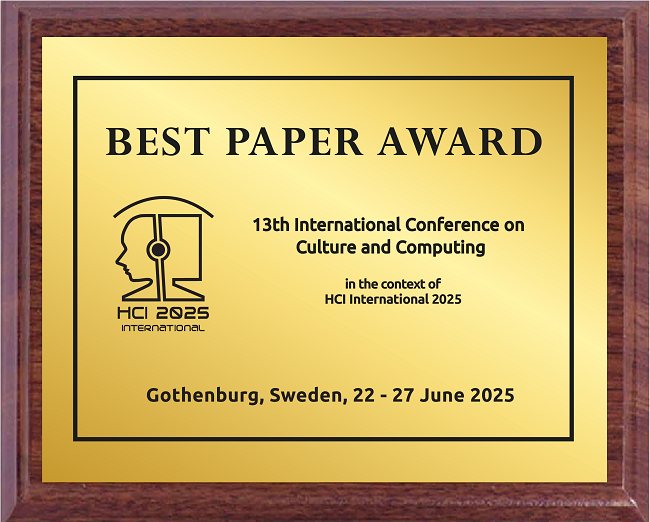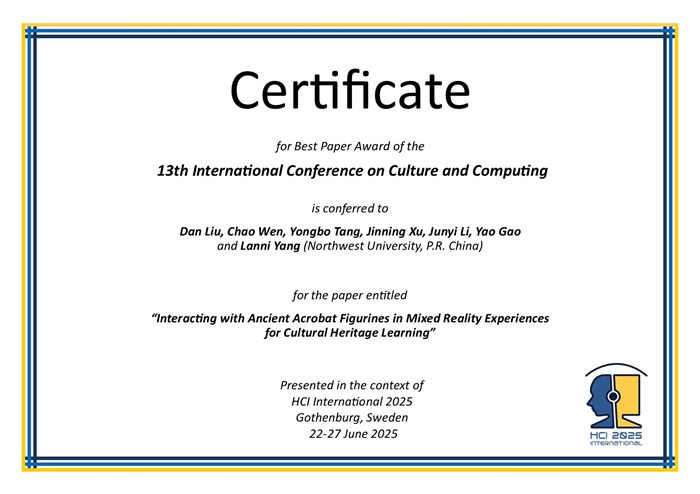The Best Paper Award of the 13th International Conference on Culture and Computing
has been conferred to
Dan Liu, Chao Wen, Yongbo Tang, Jinning Xu, Junyi Li, Yao Gao, Lanni Yang, (Northwest University, P.R. China)
for the paper entitled
"Interacting with Ancient Acrobat Figurines in Mixed Reality Experiences for Cultural Heritage Learning"

Dan Liu
(presenter)

Best Paper Award for the 13th International Conference on Culture and Computing, in the context of HCI International 2025, Gothenburg, Sweden, 22 - 27 June 2025

Certificate for Best Paper Award of the 13th International Conference on Culture and Computing presented in the context of HCI International 2025, Gothenburg, Sweden, 22 - 27 June 2025
Paper Abstract
In the field of cultural heritage digitalization, mixed reality (MR) technology is gradually demonstrating its immense potential, which offers users new ways to experience cultural heritage. As important representatives of court entertainment and art of the Qin Dynasty, the Acrobat Figurines (Baixi in Chinese) provide a new perspective for understanding the social landscape of that era, with significant historical and artistic value. Aiming at the problems of cultural and knowledge experience related to Baixi cultural heritage, in this paper an MR-based interactive experience system of Acrobat Figurines, named Baixi MR was constructed, for enhancing audiences’ perception and understanding of Baixi culture. Firstly, high-precision 3D printing was used to reconstruct the K9901 burial pit and iconic acrobatic figurines. Secondly, a learner-centric interacting model for Baixi MR was established, which aids users in understanding the history of acrobatic figurines and learning Baixi related knowledge. Finally, to evaluate our MR system of Acrobat Figurines, the unified theory of acceptance and use of technology (UTAUT) with performance expectancy (PE) and effort expectancy (EE) was adopted. The analysis was conducted from four dimensions: technology acceptance, user interaction experience, knowledge learning and cultural identity, for exploring the relationship between Baixi MR experience and Baixi cultural heritage learning. The results indicate that our MR system significantly enhances users’ experience on cultural heritage of Acrobat Figurines especially among young people. It strengthens their historical knowledge acquisition of the Qin Dynasty and deepens public emotional connection to Baixi culture. Our research provides new insights for digitalized preservation and dissemination of cultural heritage.
The full paper is available through SpringerLink, provided that you have proper access rights.


